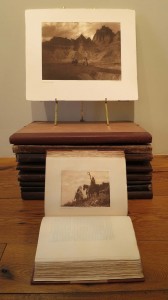Valley Fine Art in Aspen—a gallery specializing in the work of Edward S. Curtis—gives thanks this November, a time in which we also celebrate Native American Heritage Month.
We appreciate and recognize artists who have dedicated their talent and their lives to visual storytelling, and few have created an ethnographic legacy like Edward Curtis with his “The North American Indian.”

Edward Sheriff Curtis published “The North American Indian” between 1907 and 1930. The work comprises twenty volumes containing 4000 written pages of text and 1172 hand-pressed photogravures. Each volume is accompanied by a portfolio of large photogravure plates, 722 in total. The photogravures are portraits and landscapes images of Native American culture—the people, their traditions. Curtis photographed Native Americans to preserve what he has described as a “poetic, mysterious, yet simple life.”
He was enchanted by the culture of over 80 different tribes including the Hopi, Navajo, Eskimo, Blackfeet, Crow, Blood, Piegan, Suquamish, and Kwakiutl people. He lived in the U.S. at the turn of the Twentieth Century, during the transition time of then and now for indigenous people. Edward S. Curtis saw what he, Theodore Roosevelt, and J.P. Morgan thought should be remembered, what was being suppressed: heritage.
Heritage was a difficult torch to pass for Native Americans. They were removed from their home lands and children were “mainstreamed” in boarding schools, forbidden to speak their Native languages.
Former Senior Counselor to the Director at the Smithsonian’s National Museum of the American Indian George Horse Capture says in Coming to Light, a documentary about Edward S. Curtis: “If he didn’t come along and record this the loss would have been tremendous—an incalculable loss.”
Curtis, or the Shadow Catcher as some tribes called him, did capture the spirit of his subjects in photographs. It is the human spirit that lives on through the photographs. It is their spirit that recognized and embraced by their descendants.
Horse Capture writes in “Edward Curtis Shadow Catcher” for PBS American Masters: “the ultimate beauty of “The North American Indian” lies not only with the genius of Curtis, but also and most importantly, within his subjects. The native beauty, strength, pride, honor, dignity and other admirable characteristics may have been recorded by photographic techniques, but they were first an integral part of the people.”
In the spirit of Thanksgiving, “Ahéhee’.”
